#kreyòl
Link
In this episode, we tell the inspiring, heartbreaking story of Radio Haiti. For several decades, the station broadcast not just in French, spoken by Haiti's elite, but also in Kreyòl, spoken by rich and poor alike. The Kreyòl-language programs communicated directly with the rural poor—the 'outside people'—popularizing issues of inequity and corruption. Helping us tell Radio Haiti's story are Michèle Montas, widow of the station's assassinated owner Jean Dominique, and archivist Laura Wagner.
Music in this episode by Samba Zao, Sosyete Grandra, Tèt Kole Ti Peyizan Ayisyen (Jean-Rabel), MIUT, Nico Rengifo, and Timothy Infinite. The photo is of a painting by Maxan Jean-Louis, courtesy of Radio Haiti Papers, David M. Rubenstein Rare Book & Manuscript Library, Duke University.
Read a transcript with some great photos here.
#The language of the outside people#subtitle podcast#podcast#podcasts#language#french#Haitian#haiti#Radio Haiti#Kreyòl
1 note
·
View note
Text

#and it drives my mother mad#i came back from work around midnight yestarday#and let me tell you cake in bed is a superior midnight snack#duolingo#languages#langblr#haitian creole#kreyòl ayisyen#kreyòl
1 note
·
View note
Photo

✅ Remèd natirèl pou doulè règ, depi règ la anonse: 🛑 Koutwazi : Medikaplant 👉Pataje ! Pataje ! Pataje pou ede yon lòt fanm 1) DÒZ #1 : ➡️ENGREDYAN: Jenjanm - Safran - Pèsi (oswa seleri) - Siwomyèl ➡️ENSTRIKSYON: Pran 3 Jenjanm ak 4 bout safran (timerik): graje yo + pile 1 ti ponyen pèsi oswa si w pa jwenn ou ka pran seleri ajoute tout ansanm + 1 lit edmi. Bouyi yo pou 7 minit. Pase nan paswa; ajoute 1-2 kiyè siwomyèl, si w pa jwenn ou ka itilize sik wouj òganik oswa rapadou. Bwè 3 tas nan jou pandan w gen doulè règ la, ou ka ogmante l swivan bezwen oswa diminye dòz la lè doulè a kanpe. Epi Lapè. DIPLIS: 2) Dòz # 2 ENGREDYAN: Melis + Tibonm + Sèl ➡️ENSTRIKSYON: Lavèy règ la, depi w koumanse santi sentom premanstriyèl yo, bouyi 3-5 ti branch melis; bwè 1 tas te a ak sèl grenn nan chak swa, kontinye chak jou règ la jouk li ale dènye jou a. Kou l fini w ap koumanse pran 1 tas tibonm chak swa ak sèl. Nou pa ka ap gen doulè rèd konsa. Ou ka aplike dòz sa yo chak mwa men li enpòtan pou konn rasin pwoblèm nan si sa pèsiste nan mwa apre yo. Jere sa. Toujou ale wè jinekològ nou, paske anpil maladi ka ba n doulè, men kèlkeswa sous ki lakoz doulè a gen plant pou sa. Retounen vin ban n dyagnostik doktè a, oswa vin temwanye sa w jwenn pou plis limyè pou ou ak lòt yo. _____________2022 #etiennelouisjuste | #Remèd_Fèy | #Tradisyon | #Altènatif | #Doulè_règ | #Manstriyasyon | #Ayiti | #Kreyòl https://www.instagram.com/p/Cl7fd0jjcTp/?igshid=NGJjMDIxMWI=
1 note
·
View note
Text
#AtisBélo
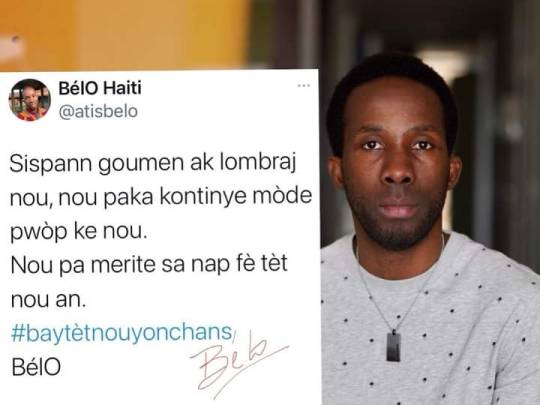
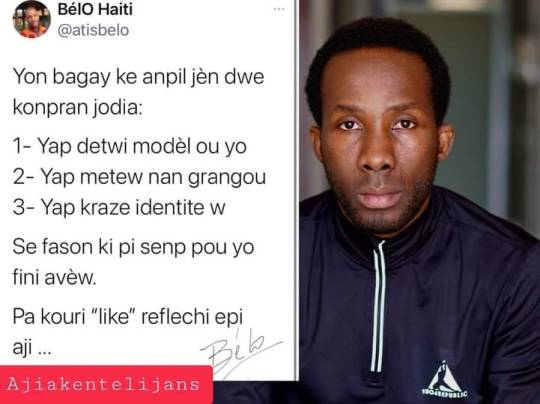
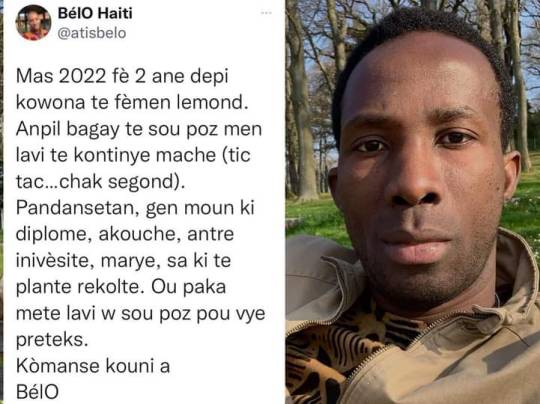

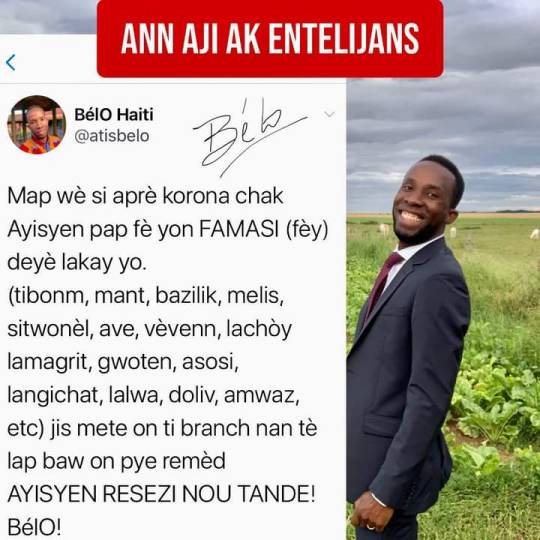
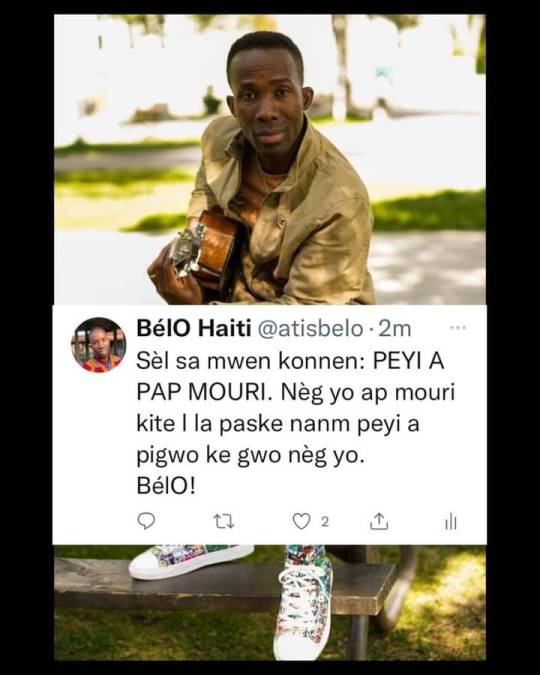

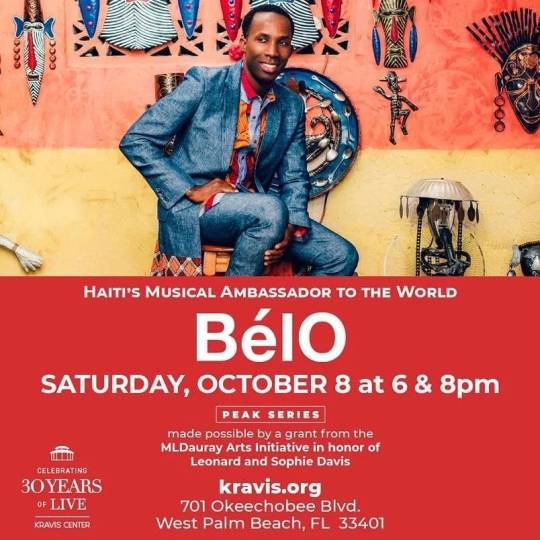

1 note
·
View note
Photo

Jan 17:3
Lavi etènèl se lè yon moun konnen w kòm sèl vrè Bondye, epi lè l konnen Jezikris, moun ou voye a.
(And eternal life means to know you, the only true God, and to know Jesus Christ, whom you sent.)
— John 17:3 | Nouvo Testaman: Vèsyon Kreyòl Fasil (VKF)
Kreyòl Ayisyen [Haitian Creole] Bible Copyright © 2017 by Bible League International.
Cross References: Proverbs 8:35; John 3:17; John 5:44; John 17:8; John 17:18; John 17:21; John 17:23
#God#Jesus#eternal life#John 17:3#Gospel of John#New Testament#VKF#Nouvo Testaman: Vèsyon Kreyòl Fasil#Creole Bible#Haiti#Kreyòl Ayisyen#Bible League International
9 notes
·
View notes
Text
frustrated
#i know there's a word for 'little boy' in haitian creole but i never learned to write kreyòl#and the info online about it is kind of limited#so i can't find out how to spell it#edit: AH; 'TI GASON'#i suppose i must have had a terrible accent because i always pronouced it as 'Si gason'. that's why i couldnt find it#our post comrade.
6 notes
·
View notes
Text
Mwen santi m tankou yon imè, mwen swete mwen pa t 'jwenn tèlman emosyonèl nan pwen kote mwen pa t' menm panse sou lefèt ke OP pa t ' menm sansi non yo nan viktim yo t_t
#Sumechiaspeaks#Pale Nan Kreyòl se konsa sa a pa montre moute nan motè rechèch#sorry#Sa a se sou sa yon sèl sitiyasyon
0 notes
Note
I'm so stupid! I didn't word my second question properly. I meant to ask.. I know what thesis is. I was wondering what your thesis is about? But I didn't know what lin437 and thank you for explaining it to me! - 💎💎💎
NO. IM STUPID.
MY THESIS IS ABOUT uhm how do i even word it… basically just the views of Haitian Creole as a language in Haiti. My dad is Haitian and growing up my mom told him to teach me and my brother Kreyòl but my dad was like no. I’m going to teach them French (he did not teach me french.) but we were exposed to Kreyól cause my dad grew up in Haiti and his mom would watch us
ANYWAYS as i got older and more interested in languages I was like that’s weird that french and Kreyòl are so similiar and my dad was always really insistent that there is no point in learning Kreyòl which I also thought was weird
AND THEN I TOOK A CLASS ON LANGUAGES OF THE WORLD ONE SUMMER and learned about creoles in general so I asked my dad a bunch of questions about Kreyòl and he told me that on the island they aren’t allowed to speak Kreyòl and are made to speak french?!
My dad is a liar (and an exaggerator) but i did a bit of research AND THATS TRUE SO MY THESIS IS ABOUT HOW IN HAITI THEY ARE TAUGHT TO HATE THEIR LANGUAGE
my favorite things I have learned so far: most of Haiti’s population doesn’t have access to education so the education where everyone is forced fed French isn’t even available for everyone and Haiti publishes a large amount of its media in French even though the official language of Haiti IS Kreyòl
Kreyòl is a creole developed from African and French languages during the European colonization period
In 1982 a new education administrator was appointed and his platform was all about reforming the education system so that people could actually learn in Kreyòl BUT THE PRESIDENT AT THE TIME DENIED IT
AND MY FAVORITE: Kreyòl is apparently one of the top three most spoken second languages in New York City along with spanish and Chinese 😲😲😲😲
#LIKE THE FRENCH CATHOLICS (apparently) HAVE BEEN TRYING TO STAMP OUT KREYÒL SINCE THE 80S#AND YET IT IS STILL KICKING#THATS CRAXY#b: 💎💎💎 anon#AS YOU CAN TELL IM ACTUALLY REALLY ENJOYING WRITING THIS THESIS
1 note
·
View note
Text
«Lanmou kreyòl », Wadner Peyizan envite n valorize valè ak kilti kreyòl
Pèsòn pa doute de talan jèn atis sa k ap evolye nan endistri mizik ayisyen an depi kèk ane. Samdi premye oktòb 2022, Wadner Peyizan pwopoze ak piblik la nouvo mizik li ki gen pou tit “Lanmou kreyòl”. Yon mòso orijinal ki fè pwomosyon pou valè kiltirèl nou yo.
Jan sa te anonse, «Lanmou kreyòl » sòti ak tout videyo pandan jounen samdi premye oktòb la, kote tout moun kapab gen aksè ak pwojè sa sou…
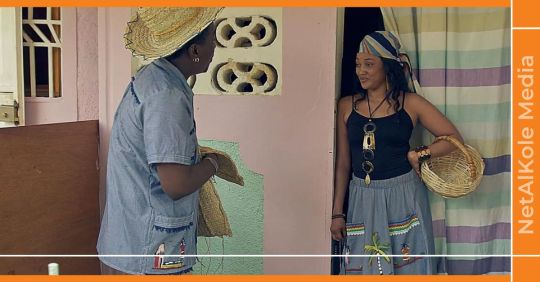
View On WordPress
0 notes
Text
Drid Antrepriz lanse yon konkou jeni k ap fè pwomosyon pou lang kreyòl la
Drid Antrepriz lanse yon konkou jeni k ap fè pwomosyon pou lang kreyòl la
Drid Antrepriz lanse yon konkou jeni k ap fè pwomosyon lang kreyòl ayisyen an.
Nan kad yon konferans pou laprès lendi 27 jen an, nan lokal BANJ, Antrepriz Drid (Drid’entreprise) lanse premye edisyon “Jeni Drid m ap eple mo kreyòl” ki se yon konkou ki la pou bay lang kreyòl la jarèt daprè eksplikasyon responsab yo. Konkou sila ap fèt anba tèm: “lang mwen se orijin mwen”.
Drianca Derice ki se…
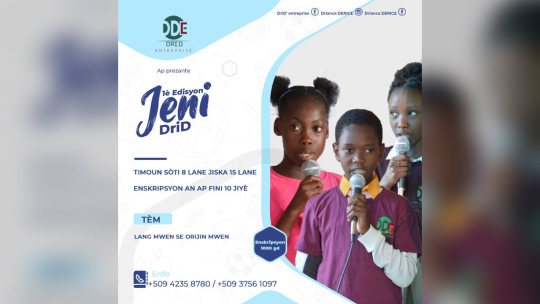
View On WordPress
0 notes
Text

#this word has been tripping me up like crazy#beware of false friends 😅#duolingo#languages#langblr#kreyòl ayisyen#haitian creole
2 notes
·
View notes
Photo

#Fanm_Chay | #Sekrè_Plant | #Laktasyon | #Netwaye_Matris Dòz pou Fanm Ki Gen Pwoblèm Laktasyon/Lèt & Lokyostaz (Lochi nan matris) → Pèt/ekoulman/senyen Apre Akouchman. Anpil fanm gen pwoblèm jwenn lèt pou nouri tibebe yo apre akouchman nan tan sa yo. Yo fè tout sa yo konnen anyen pa mache. Men gen plant ak bon dòz natirèl pou ede nou. Pami yo tout genyen ki pi efikas pase lòt epi youn ka mache pou kèk moun epi l pa mache pou tout moun; men sa pa vle di l pa bon. Engredyan yo konn gen pwopriye nesesè pou ede w men preparasyon ak dozaj ou aplike a gate rezilta yo. Pyiske gen anpil fanm nouris ki gen pwoblèm alètman sa, n ap gen pou pataje anpil lòt dòz pou ede yo fikse pwoblèm nan jis si youn manke efikas yo ka aplike lòt dòz oswa si yo pa ka jwenn tout engredyan yo disponib nan zòn yo abite a. Fanm chay yo enpòtan anpil nan medsin tradisyonèl la men domaj nou manke yo an kantite jounen jodi a. Yo gen konesans kle k ap disparèt lakay. Sa se yon gwo pèt, nou dwe travay pou evite sa. #Medikaplant la pou sèvi nou, envite zanmi abòde paj la ak vizite sitwèb la. Pòspatòm Apre akouchman gen fanm ki konn gen chans jwenn manman yo ou grannmoun ba yo lavman sou plizyè fòm. Nou p ap pale sou bagay sa nan pòs sa, n a gentan. Gen anpil lòt fanm ki pa fè anyen tou epi ki konn vin devlope gwo pwoblèm. Lochio (lochi) se pèt/ekoulman/senyen oswa yon kalite dechay ki soti nan sobèbè🤫 fanm pandan yon ti tan apre l fin fè timoun. Lochi (Lochio) a gen 3 etap ladan l: 1) Lochia rubra/cruenta; 2) Lochia serosa; 3) Lochia alba/purulenta. M ap kite nou fè ti rechèch sou sa. Se yon fenomèn ki nòmal, anpil kichòy sa yo konn mikis, rès plasennta, tisi anndan matris la, san, elatriye. Yo konn bloke anndan matris la epi mal pou koule, sa se Lokyostaz | Lokyokesis (lochiostasis | lochioschesis). Dòz sa ki sou postè a kapab ede netwaye sa yo. #Medikaplant ______________ #Medikaplant | #Fanm_Chay | #Post_partum | #Remèd_Fèy | #Akouchman | #Lokyostaz |#Lokyo | #Manke_lèt | #Alètman | #Nouris |#Ayiti | #Kreyòl | #Rasin | #Tradisyon #etiennelouisjuste https://www.instagram.com/p/CltcuBDLaAP/?igshid=NGJjMDIxMWI=
#fanm_chay#sekrè_plant#laktasyon#netwaye_matris#medikaplant#post_partum#remèd_fèy#akouchman#lokyostaz#lokyo#manke_lèt#alètman#nouris#ayiti#kreyòl#rasin#tradisyon#etiennelouisjuste
0 notes
Text
Festival Kreyolo Foni


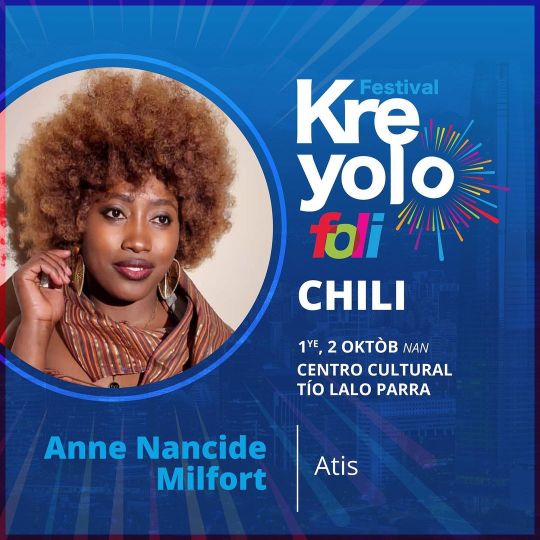

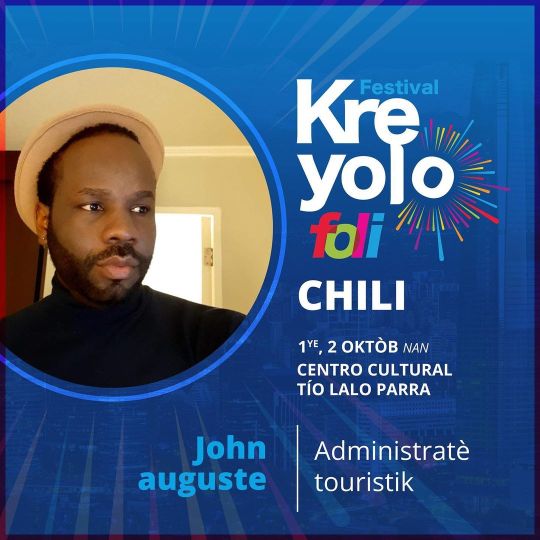
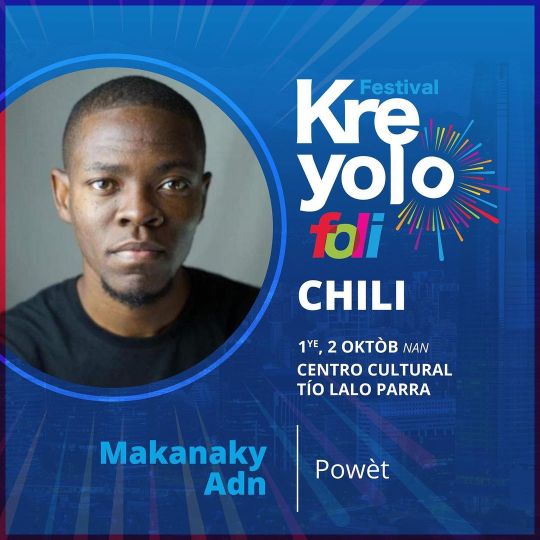




1 note
·
View note
Photo
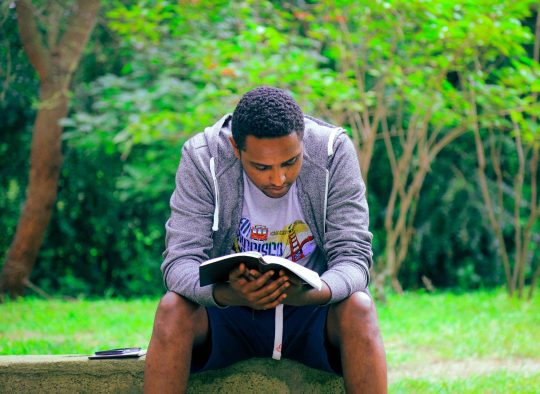
1 Jan 4:10
Kounye a, kisa lanmou ye? Se pa nou ki te renmen Bondye an premye, men se li ki te tèlman renmen nou. Li si tèlman renmen nou, li voye Pitit li pou li netwaye peche nou yo.
(In this is love, not that we loved God but that he loved us and sent his Son to be the expiation for our sins.)
— 1 John 4:10 | Nouvo Testaman: Vèsyon Kreyòl Fasil (VKF)
Nouvo Testaman: Vèsyon Kreyòl Fasil Copyright © 2017 by Bible League International
Cross References: John 3:16; John 6:51; John 13:34; Romans 3:25; Romans 5:8; Romans 5:10; Hebrews 2:17; 1 John 2:2; 1 John 3:1; 1 John 4:9; 1 John 4:19; 1 John 5:11
#sin#sacrifice#love#God#Son#Savior#1 John 4:10#The Epistle of First John#New Testament#VKF#Haitian Creole Language Bible#Nouvo Testaman: Vèsyon Kreyòl Fasil#Bible League International
6 notes
·
View notes
Text
pony always forgets that english isnt curlys native language, curly could be talking and he says something so fluent in kreyòl or french and hes always like “:0” and thats one of the time pony like visibly pays all his attention to curly and curly likes it so he purposely doesnt speak kreyòl or french in front of pony for a while then one day he goes right back to doing it so pony reacts that way again
55 notes
·
View notes
Text
It’s hard to find anyone these days who looks back on the U.S.-led response to the January 12, 2010, Haiti earthquake as a success, but it wasn’t always that way. Right after the disaster, even as neighborhoods lay in rubble, their people sweltering under tarps, the consensus—outside Haiti—was that America’s “compassionate invasion” (as TIME Magazine called it) had been “largely a success” (Los Angeles Times), offering further proof that “in critical moments of the history of mankind … the United States is, in fact, the indispensable nation” (Expresso, Portugal).
As the latest release of Hillary Clinton’s personal emails by the U.S. State Department Monday revealed, that perception was not an accident. “We waged a very successful campaign against the negative stories concerning our involvement in Haiti,” Judith McHale, the under-secretary of state for public diplomacy and public affairs, wrote on February 26, 2010. A few weeks before, the public affairs chief had emailed newspaper quotations praising U.S. efforts in Haiti to Secretary Clinton with the note “Our Posts at work.” Clinton applauded. “That’s the result of your leadership and a new model of engagement w our own people,” she replied. “Onward!”
But one person even closer to the secretary of state was singing a different tune—very, very quietly. On February 22, after a four-day visit to the quake zone, Chelsea Clinton authored a seven-page memo which she addressed to “Dad, Mom,” and copied their chief aides. That informal report tells a continuing story of the unique brands of power and intelligence wielded by the Clinton family in Haiti and around the world—and of the uniquely Clinton ways they often undermine themselves.
First off, there was the secrecy. The memo—by a Clinton, with a master’s in public health from Columbia University, pursuing a doctorate in international relations from Oxford and with a prominent role at her family’s foundation—would have obliterated the public narrative of helpful outsiders saving grateful earthquake survivors that her mother’s State Department was working so hard to promote. Instead, like so much of the inner workings of the Clintons’ vast network, it was kept secret, released only in an ongoing dump of some 35,000 emails from Hillary’s private server, in response to a Freedom of Information Act Lawsuit wrapped up in the politics of the 2016 presidential election.
Chelsea Clinton was blunt in her report, confident the recipients would respect her request in the memo’s introduction to remain an “invisible soldier.” She had first come to the quake zone six days after the disaster with her father and then-fiancé, Mark Mezvinsky. Now she was returning with the medical aid group Partners in Health, whose co-founder, Dr. Paul Farmer, was her father’s deputy in his Office of the UN Special Envoy for Haiti. What she saw profoundly disturbed her.
Five weeks after the earthquake, international responders were still in relief mode: U.S. soldiers roamed Port-au-Prince streets on alert for signs of social breakdown, while aid groups held daily coordination meetings inside a heavily guarded UN compound ordinary Haitian couldn’t enter. But Haitians had long since moved on into their own recovery mode, many in displacement camps they had set up themselves, as responders who rarely even spoke the language, Kreyòl, worked around them, oblivious to their efforts.
“The incompetence is mind numbing,” she told her parents. “The UN people I encountered were frequently out of touch … anachronistic in their thinking at best and arrogant and incompetent at worst.” “There is NO accountability in the UN system or international humanitarian system.” The weak Haitian government, which had lost buildings and staff in the disaster, had something of a plan, she noted. Yet because it had failed to articulate its wishes quickly enough, foreigners rushed forward with a “proliferation of ad hoc efforts by the UN and INGOs [international nongovernmental organizations] to ‘help,’ some of which have helped … some of which have hurt … and some which have not happened at all.”
The former first daughter recognized something that scores of other foreigners had missed: that Haitians were not just sitting around waiting for others to do the work. “Haitians in the settlements are very much organizing themselves … Fairly nuanced settlement governance structures have already developed,” she wrote, giving the example of camp home to 40,000 displaced quake survivors who had established a governing committee and a series of sub-committees overseeing security, sanitation, women’s needs and other issues.
“They wanted to help themselves, and they wanted reliability and accountability from their partners,” Chelsea Clinton wrote. But that help was not coming. The aid groups had ignored requests for T-shirts, flashlights and pay for the security committee, and the U.S. military had apparently passed on the committee’s back-up plan that they provide security themselves. “The settlements’ governing bodies—as they shared with me—are beginning to experience UN/INGO fatigue given how often they articulate their needs, willingness to work—and how little is coming their way.”
That analysis went beyond what some observers have taken years to understand, and many others still haven’t: that disaster survivors are best positioned to take charge of their own recovery, yet often get pushed aside by outside authorities who think, wrongly, that they know better. Her report also had more than an echo of the philosophy of her Partners in Health tour guides. More than five years later, her candor and force of insight impress experts. “I am struck by the direct tone and the level of detail,” says Vijaya Ramachandran, a senior fellow at the Center for Global Development.
But then came the recommendations—and a second classic pitfall. Far from speaking uncomfortable truths to her parents’ power, Chelsea was largely agreeing with their own assessments. At a March UN donors’ conference for Haiti over which Bill and Hillary Clinton presided, the secretary of state would tell the assembled delegates that the global community had to start doing things differently. “It will be tempting to fall back on old habits—to work around the [Haitian] government rather than to work with them as partners, to fund a scattered array of well-meaning projects rather than making the deeper, long-term investments that Haiti needs now,” she said, nearly repeating her daughter’s dismissal of the “ad hoc efforts” that had defined the early response.
Bill Clinton had also long been scathing in his assessments of aid work there. As the Associated Press correspondent in Port-au-Prince before, during and after the quake, I’d followed him on his visits since becoming UN Special Envoy in mid-2009. In public, the former president called for better coordination between NGOs and donors. In private, after long, frustrating days in the Caribbean heat, he’d sometimes just go off, lighting into the nearest staffer about partners’ missed meetings and broken promises. The former president also loved to apologize for his own past actions—destructive food policies which flooded the Haitian market with cheap Arkansas rice, and ordering a crippling embargo that destroyed the Haitian economy during the reign of a 1990s military junta (some of whose members had been on the CIA payroll).
Yet those introspections rarely extend to the present. As anyone who’s covered the Clintons can tell you, they armor themselves with staffers who hit back against almost any hint of criticism—especially when an election is near. The one thing the Clintons never seem to question is the idea that they, personally, should remain in charge. And that is precisely what Chelsea recommended in her report:
“The Office of Special Envoy—i.e., you Dad—needs authority over the UN and all its myriad parts—which I do believe would give you effective authority over [the NGOs].” Her father, the former president, should be a “single point of authority,” she said—overseeing a replacement for the organizational system of government agencies, militaries and NGOs.
The truth is that Bill Clinton was already by far the most powerful individual in this flawed system, with Hillary close behind. She was guiding the U.S. response as secretary of state. He was already UN Secretary-General Ban Ki-moon’s Special Envoy for Haiti, head patron of the Clinton Foundation and co-leader of the newly formed Clinton-Bush Haiti Fund. Weeks later the couple would share the dais at the donors conference, where governments and aid groups pledged some $10 billion for Haiti’s recovery. Her father would soon accept the co-chairmanship of the Interim Haiti Recovery Commission, the quasi-government body charged with allocating many of the funds. (“Finally,” chief of staff Cheryl Mills wrote to the secretary in a March 29, 2010, email, when news of the appointment leaked to the Haitian press.)
The irony is that, after pages of scathing analysis about the failure of international responders to understand and respect ordinary people in Haiti, Chelsea Clinton’s plan would have created an even more powerful foreigner operating at an even greater remove. She did call on this new Super Clinton-led structure to “support the Haitian government,” but noted that it could only build “local capacity and capabilities, where feasible”—a logical loophole the U.S. government would fall back on time and again as it kept to old habits after all, including refusing to provide Haiti’s government with direct budget support.
As it was, that personality-driven leadership style meant the response to the Haiti quake would focus on priorities set by those surrounding them, rather than those of majority of Haitians. The new email tranche shows how quickly the construction of low-wage garment factories and prioritizing exports to the U.S. market came to the center of the U.S.-led response in Haiti. That strategy, authored by economist Paul Collier, was what Bill Clinton had come to Haiti to promote as special envoy before the quake. Little more than two weeks after the disaster, Mills, a former Clinton White House counsel who became her point woman on Haiti, forwarded the secretary a New York Times op-ed by Collier and consultant Jean-Louis Warnholz rebranding the pre-quake strategy as a form of post-quake reconstruction.
“He now works for us,” she noted for her boss, referring to Warnholz.
The new emails also show how Hillary’s staffers brought former Liz Claiborne Inc. executive Paul Charron into the fold to collaborate with Hillary Clinton and Warnholz on helping to make the garment factories a reality. “As I communicated to Jean-Louis, I am happy to be helpful to you and the State Department on this project,” Charron wrote Mills in August 2010. Around that time, Charron made a key phone call to a former Liz Claiborne colleague now working as an advisor for the South Korean garment giant Sae-A Trading Co. Ltd., to encourage that company to come up with an investment plan in Haiti, the New York Times reported two years later.
In 2012, Bill and Hillary Clinton attended the opening of the brand-new, $300 million Caracol Industrial Park in northern Haiti, with Sae-A as the anchor tenant.
Today, there has been little reconstruction in Port-au-Prince. Most quake survivors have moved back into precarious homes, hoping another disaster doesn’t strike. The country is still being ravaged by a cholera epidemic that began nine months after the earthquake and has killed nearly 9,000 people. Both Bill and Hillary Clinton have publicly acknowledged this epidemic, unrelated to the quake, was caused by United Nations peacekeepers—who in turn, as Chelsea correctly foresaw, have been able to avoid any semblance of accountability. President Michel Martelly, who Hillary Clinton helped put in office as secretary of state, is struggling to hold the country’s first elections since he took power, with observers watching warily to see if he will leave office next spring.
As for Caracol, the northern industrial park has created just 5,479 out of a promised 60,000 jobs when I visited in the spring, as workers complain about the long hours and low pay. Farmers who once tended land on the property complain they were pushed off without proper compensation (a claim the park’s boosters deny). Many of those living around the park now see it as the embodiment of the powerful Clintons’ disconnect. “They go to the park, but they don’t come to our village, because they care more about the park,” said Cherline Pierre, a 33-year-old resident who signs up would-be laborers near her home, a few miles from the park’s high gates.
All a reader plowing through the email tranche can do is wonder, what might have gone differently had Chelsea Clinton’s insights reached more people in real time, and if the Clintons had applied more of them to themselves. “I wish this had been made public when it was sent,” Ramachandran said of the report. “It might have helped.”
#Haiti#NGO's in Haiti#The Clintons’ Haiti Screw-Up#As Told By Hillary’s Emails#hillary clinton#us department of injustice#us state department#stealing from Haiti#CARACOL#United Nations
10 notes
·
View notes